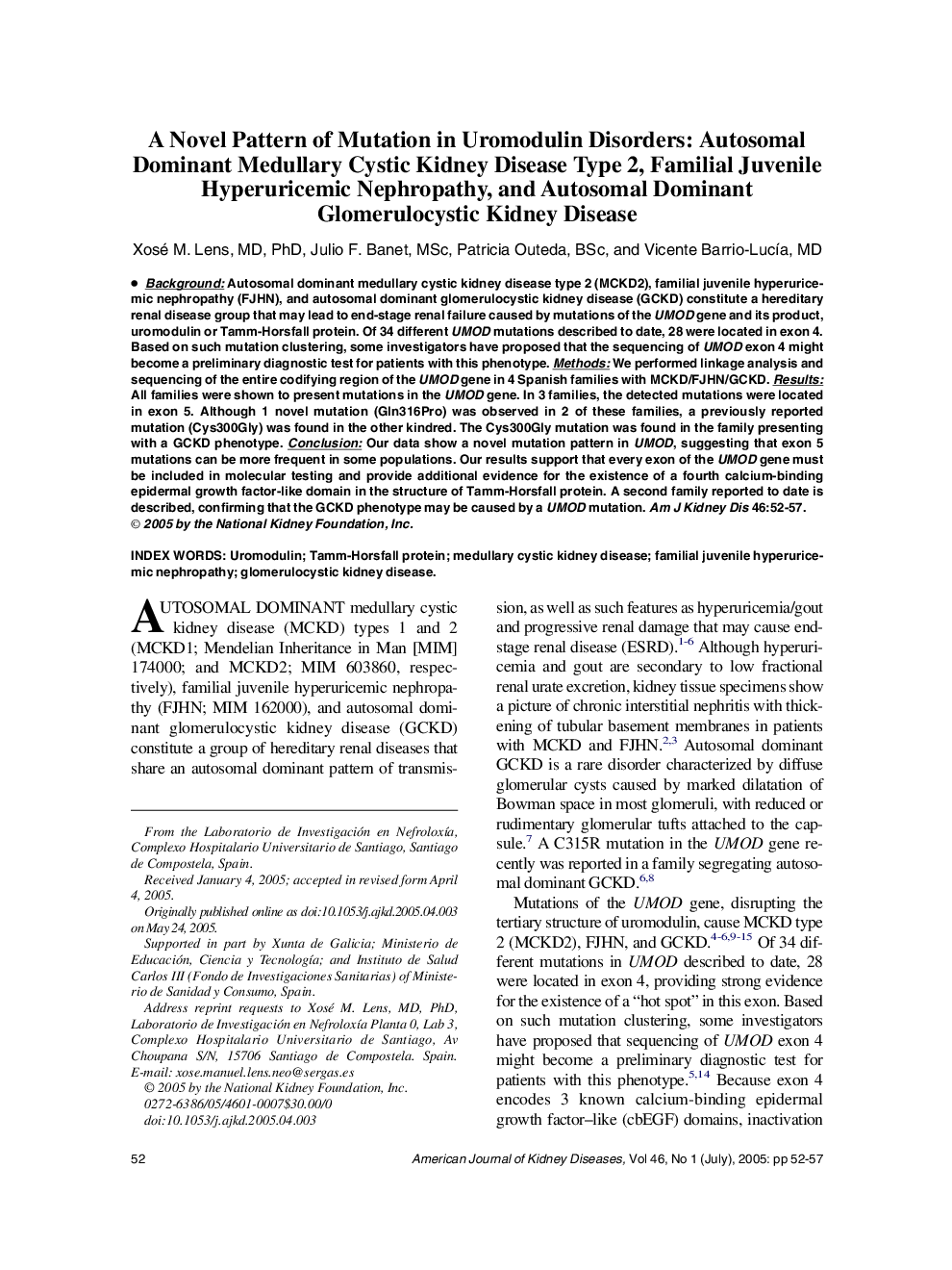| کد مقاله | کد نشریه | سال انتشار | مقاله انگلیسی | نسخه تمام متن |
|---|---|---|---|---|
| 10047496 | 1598401 | 2005 | 6 صفحه PDF | دانلود رایگان |
عنوان انگلیسی مقاله ISI
A Novel Pattern of Mutation in Uromodulin Disorders: Autosomal Dominant Medullary Cystic Kidney Disease Type 2, Familial Juvenile Hyperuricemic Nephropathy, and Autosomal Dominant Glomerulocystic Kidney Disease
دانلود مقاله + سفارش ترجمه
دانلود مقاله ISI انگلیسی
رایگان برای ایرانیان
کلمات کلیدی
موضوعات مرتبط
علوم پزشکی و سلامت
پزشکی و دندانپزشکی
بیماریهای کلیوی
پیش نمایش صفحه اول مقاله

چکیده انگلیسی
Background: Autosomal dominant medullary cystic kidney disease type 2 (MCKD2), familial juvenile hyperuricemic nephropathy (FJHN), and autosomal dominant glomerulocystic kidney disease (GCKD) constitute a hereditary renal disease group that may lead to end-stage renal failure caused by mutations of the UMOD gene and its product, uromodulin or Tamm-Horsfall protein. Of 34 different UMOD mutations described to date, 28 were located in exon 4. Based on such mutation clustering, some investigators have proposed that the sequencing of UMOD exon 4 might become a preliminary diagnostic test for patients with this phenotype. Methods: We performed linkage analysis and sequencing of the entire codifying region of the UMOD gene in 4 Spanish families with MCKD/FJHN/GCKD. Results: All families were shown to present mutations in the UMOD gene. In 3 families, the detected mutations were located in exon 5. Although 1 novel mutation (Gln316Pro) was observed in 2 of these families, a previously reported mutation (Cys300Gly) was found in the other kindred. The Cys300Gly mutation was found in the family presenting with a GCKD phenotype. Conclusion: Our data show a novel mutation pattern in UMOD, suggesting that exon 5 mutations can be more frequent in some populations. Our results support that every exon of the UMOD gene must be included in molecular testing and provide additional evidence for the existence of a fourth calcium-binding epidermal growth factor-like domain in the structure of Tamm-Horsfall protein. A second family reported to date is described, confirming that the GCKD phenotype may be caused by a UMOD mutation.
ناشر
Database: Elsevier - ScienceDirect (ساینس دایرکت)
Journal: American Journal of Kidney Diseases - Volume 46, Issue 1, July 2005, Pages 52-57
Journal: American Journal of Kidney Diseases - Volume 46, Issue 1, July 2005, Pages 52-57
نویسندگان
Xosé M. MD, PhD, Julio F. MSc, Patricia BSc, Vicente MD,